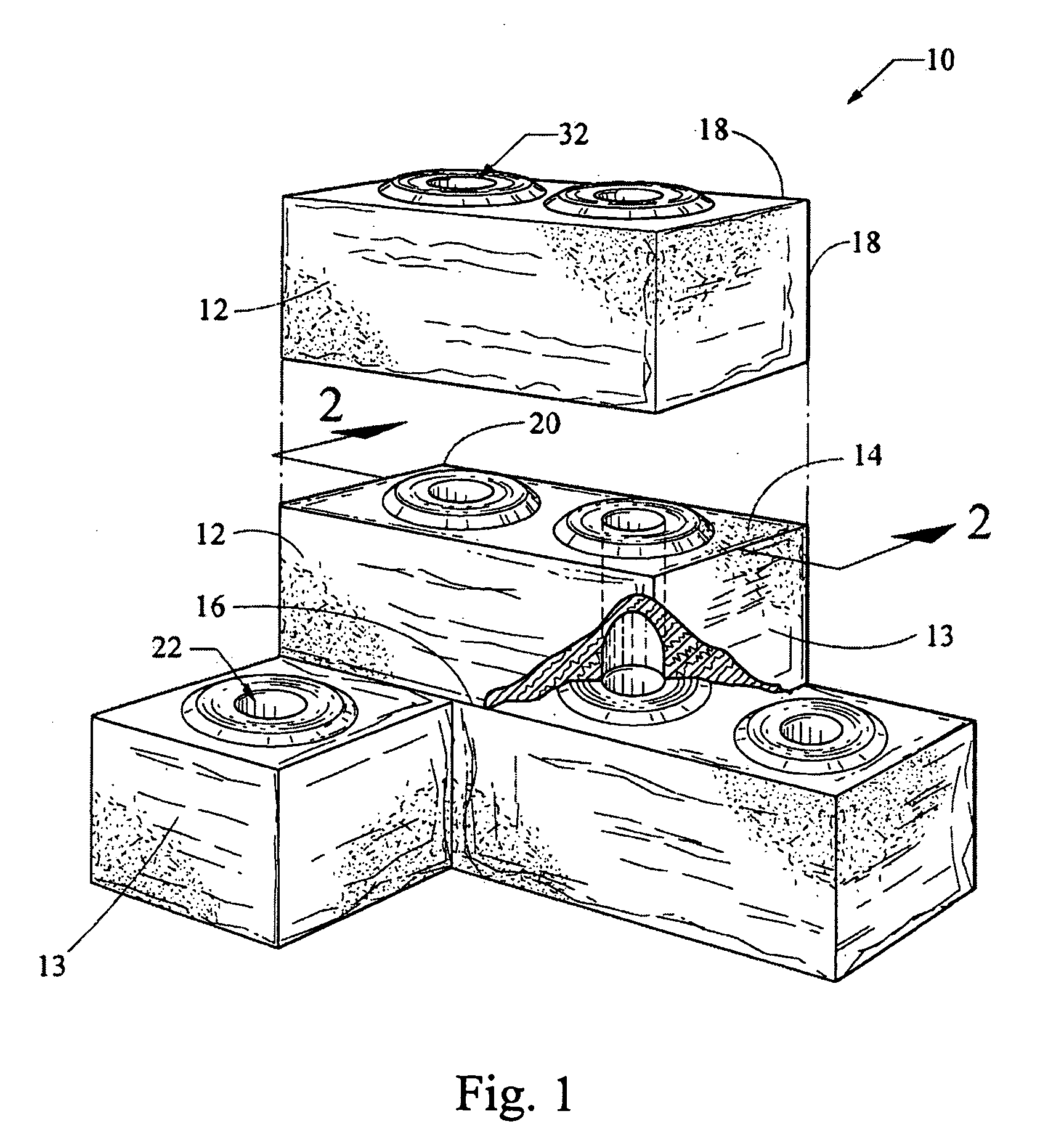Building block, building block mold, and method for forming building block
a technology for building blocks and molds, applied in sustainable buildings, manufacturing tools, light and heating apparatus, etc., can solve the problems of limited application of straw bales, limited insulation capabilities, limited attainable geometries and/or sizes, etc., to achieve good dimensional tolerance, high dimensional tolerance, and/or compressive strength.
- Summary
- Abstract
- Description
- Claims
- Application Information
AI Technical Summary
Benefits of technology
Problems solved by technology
Method used
Image
Examples
Embodiment Construction
[0030]The present invention seeks to improve on the teachings of commonly owned U.S. Pat. No. 6,951,080, and co-pending U.S. patent application Ser. Nos. 10 / 807,946 (filed Mar. 24, 2004, U.S. Publication No. 2005 / 0223671) and 12 / 187,779 (filed Aug. 13, 2008); the contents of which are hereby expressly entirely incorporated by reference for all purposes. Through the improvements, as described herein, the present invention provides an improved block, devices and methods of forming the same, which provide a building block having one or any combination of improved strength, greater resiliency and durability, increased stackability and overall greater versatility as compared with existing blocks. As mentioned, the improved block leads itself to providing a moisture, fire and / or pest resistant building block having attractive surface finish, high dimensional tolerance capability, good resistance to degradation, and / or compressive strength. The improved block also lends itself well to use ...
PUM
| Property | Measurement | Unit |
|---|---|---|
| Temperature | aaaaa | aaaaa |
| Length | aaaaa | aaaaa |
| Pressure | aaaaa | aaaaa |
Abstract
Description
Claims
Application Information
 Login to View More
Login to View More - R&D
- Intellectual Property
- Life Sciences
- Materials
- Tech Scout
- Unparalleled Data Quality
- Higher Quality Content
- 60% Fewer Hallucinations
Browse by: Latest US Patents, China's latest patents, Technical Efficacy Thesaurus, Application Domain, Technology Topic, Popular Technical Reports.
© 2025 PatSnap. All rights reserved.Legal|Privacy policy|Modern Slavery Act Transparency Statement|Sitemap|About US| Contact US: help@patsnap.com



